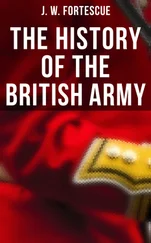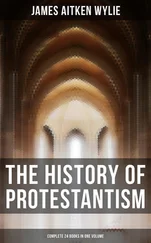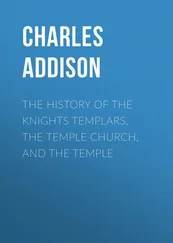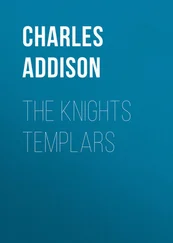James Burnes - Sketch of the History of the Knights Templars
Здесь есть возможность читать онлайн «James Burnes - Sketch of the History of the Knights Templars» — ознакомительный отрывок электронной книги совершенно бесплатно, а после прочтения отрывка купить полную версию. В некоторых случаях можно слушать аудио, скачать через торрент в формате fb2 и присутствует краткое содержание. Жанр: foreign_antique, foreign_prose, Историческая проза, на английском языке. Описание произведения, (предисловие) а так же отзывы посетителей доступны на портале библиотеки ЛибКат.
- Название:Sketch of the History of the Knights Templars
- Автор:
- Жанр:
- Год:неизвестен
- ISBN:нет данных
- Рейтинг книги:4 / 5. Голосов: 1
-
Избранное:Добавить в избранное
- Отзывы:
-
Ваша оценка:
- 80
- 1
- 2
- 3
- 4
- 5
Sketch of the History of the Knights Templars: краткое содержание, описание и аннотация
Предлагаем к чтению аннотацию, описание, краткое содержание или предисловие (зависит от того, что написал сам автор книги «Sketch of the History of the Knights Templars»). Если вы не нашли необходимую информацию о книге — напишите в комментариях, мы постараемся отыскать её.
Sketch of the History of the Knights Templars — читать онлайн ознакомительный отрывок
Ниже представлен текст книги, разбитый по страницам. Система сохранения места последней прочитанной страницы, позволяет с удобством читать онлайн бесплатно книгу «Sketch of the History of the Knights Templars», без необходимости каждый раз заново искать на чём Вы остановились. Поставьте закладку, и сможете в любой момент перейти на страницу, на которой закончили чтение.
Интервал:
Закладка:
At the head of the Order stood the Grand Master, who, like the General of the Jesuits in modern times, was independent of all authority but that of the sovereign pontiff. The residence of the Grand Master was the city of Jerusalem; when the city was lost, he fixed his seat at Antioch, next at Acre, then at the castle of the Pilgrims, 12 12 This stronghold of the Order was built about 1217, under the Grand Master, William de Chartres, who employed a number of pilgrims of the masonic class in its erection. Hence the appellation of Pilgrim Castle which it received.
between Caiphas and Cæsarea, and finally in Cyprus, for his duty required him to be always in the Holy Land. The Grand Master never resided in Europe until the time of Jacques de Molay. The power of the Grand Master was considerable, though he was very much controuled by the chapter, without whose consent he could not dispose of any of the higher offices, or undertake any thing of importance. He could not, for instance, take money out of the treasury, without the consent of the prior of Jerusalem; he could neither make war or truce, or alter laws, but with the approbation of the chapter. But the Grand Master had the right of bestowing the small commands, the governments of houses of the Order, and of selecting the brethren who should form the chapter, which power was again controuled by there being always assigned him two brethren as assistants, who, with the Seneschal, were to form a part of every chapter. The Order was aristocratic rather than monarchic; the Grand Master was like a Doge of Venice, and his real power chiefly depended on his personal qualities; he had, however, many distinctions; the greater part of the executive power was in his hands – in war he was the commander-in-chief; he had, as vicar-general of the Pope, episcopal jurisdiction over the clergy of the Order; he ranked with princes, and his establishment corresponded thereto; he had for his service four horses, a chaplain, two secretaries, a squire of noble birth, a farrier, a Turcopole and cook, with footmen, and a Turcoman for a guide, who was usually fastened by a cord to prevent his escape. When the Grand Master died, his funeral was celebrated with great solemnity by the light of torches and wax tapers, – an honour bestowed by the Order on no other of its Members. All the Knights and Prelates were invited to assist. Each Brother who was present was to repeat two hundred Pater Nosters within the space of seven days, for the repose of the soul of the deceased; and one hundred poor persons were fed at home, at the expense of the Order, with the same design. 13 13 The Knights in general seem to have been buried with their swords placed beside the body. Several skeletons are said to have been found in the Templar Cemetery at Mount Hooly, near Edinburgh, lying cross-legged, with swords by their sides. See Maitland's History of Edinburgh.
Each province of the Order had a Grand Prior, who represented in it the Grand Master; each house had its Prior at its head, who commanded its Knights in war, and presided over its chapters in peace. In England, the Grand Prior sat in Parliament as a Peer of the Realm. To complete this sketch of the Order, we may remark, that except Scandinavia, (for they had some possessions in Hungary,) there was not a country in Europe in which the lavish piety of princes and nobles had not bestowed on the Templars a considerable portion of the wealth of the state; for in every province the Order had its churches and chapels – the number of which was in the year 1240, as great as 1050 – villages, farm-houses, mills, corn-lands, pastures, woods, rights of venison, and fisheries. 14 14 The first preceptory of the Templars in England was founded at Holborn, then in the suburbs of London, whence they afterwards removed to Fleet Street about 1185. The only remains of the latter place of residence is the beautiful circular edifice still called the Temple Church, supposed to have been built after the model of the Church of the Holy Sepulchre at Jerusalem. This seems to have been a favourite form with the Order. The Church of St. Sepulchre at Cambridge, built by the Templars, is of a circular construction, having the appearance of a fortified tower. In examining this building (says Mr. Britton) we are struck with its ponderous and durable appearance, as if it was intended for a castellated edifice. The masonry of the ancient walls, and also of the pillars and arches, is such as to evince great skill in the building, the stones being all squared and chisselled with the most perfect accuracy to fit their respective places. At Northampton, the same form seems to have been observed. The Church of the Holy Sepulchre (says Pennant, speaking of this place,) was supposed to have been built by the Knights Templars on the model of that at Jerusalem. Others of the chapels appertaining to the Order do not, however, present a similar plan. The principal Bailliwicks of the Order in England were the following, viz. London, Kent, Warwick, Waesdone, Lincoln, Lindsey, Bolingbroke, Widine, Agerstone, York. In these were seventeen preceptories. Most places having the prefix of Temple belonged to the Knights, – such as Temple-Bruer in Lincolnshire, where, Camden says, that in his time there were the ruins of a church or chapel, "not unlike that of the new Temple at London." Probably it was of the circular form above noticed. Some account of the Irish preceptories will be found in the Appendix . The Pope (Clement V.) committed the glaring absurdity of making a provisional decree to be executed in perpetuity. The Bull which is issued at the Court at Vienne, without asking the judgment of the assembled bishops and others, declares, that although he cannot of right, consistently with the Inquisition and proceedings, pronounce a definite sentence, yet by way of apostolical provision and regulation, he perpetually prohibited people from entering into the Order, and calling themselves Templars. The penalty of the greater excommunication was held out as a punishment for offending.
The revenues of the Templars in England in 1185, as given by Dugdale, will afford some idea of their wealth. The entire annual income of the Order has been estimated at not less than six millions sterling.
It cannot be denied, that this enormous wealth, together with the luxury and other evils which it engendered, provoked the hatred of the secular clergy and laity, and paved the way to the spoliation of the Order. In 1252, the pious pope-ridden Henry III. of England said, that the prelates and clergy in general, but especially the Templars and Hospitallers, had so many liberties and privileges, that their excessive wealth made them mad with pride; he added, that what had been bestowed imprudently, ought to be prudently resumed, and declared his intention of revoking the inconsiderate grants of himself and his predecessors. The Grand Prior of the Templars replied, "What sayest thou, my Lord the King? Far be it that so discourteous and absurd a word should be uttered by thy mouth. So long as thou observest justice, thou mayest be a king, and as soon as thou infringest it, thou wilt cease to be a king." A bold expression certainly, but the Prior knew his man well, and he would hardly have spoken so to the son of Henry. The anecdote of Richard I. bestowing his daughter Pride in marriage on the Templars, is well known; and numerous traits of their haughtiness, avarice, luxury, and other of the current vices, may be found in the writers of the thirteenth century; but till the final attack was made, no worse charge was brought against them, unless such is implied in a bull of Pope Clement IV. in 1265, which is, however, easily capable of a milder interpretation. Mr. Raynouard asserts, too, that the proverbial expression bibere Templariter is used by no writer of the thirteenth century. In this he is preceded by Baluze and Roquefort, who maintain, that, like bibere Papaliter , it only signified to live in abundance and comfort.
Читать дальшеИнтервал:
Закладка:
Похожие книги на «Sketch of the History of the Knights Templars»
Представляем Вашему вниманию похожие книги на «Sketch of the History of the Knights Templars» списком для выбора. Мы отобрали схожую по названию и смыслу литературу в надежде предоставить читателям больше вариантов отыскать новые, интересные, ещё непрочитанные произведения.
Обсуждение, отзывы о книге «Sketch of the History of the Knights Templars» и просто собственные мнения читателей. Оставьте ваши комментарии, напишите, что Вы думаете о произведении, его смысле или главных героях. Укажите что конкретно понравилось, а что нет, и почему Вы так считаете.












